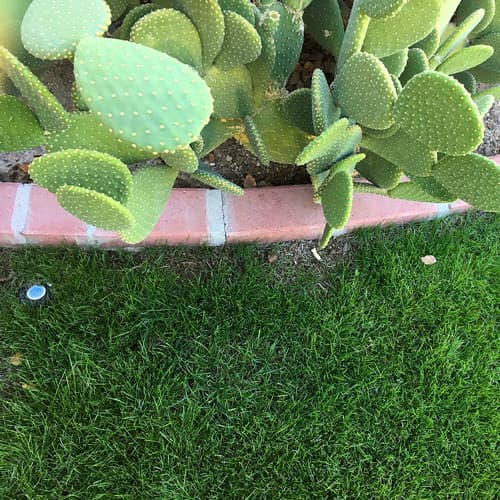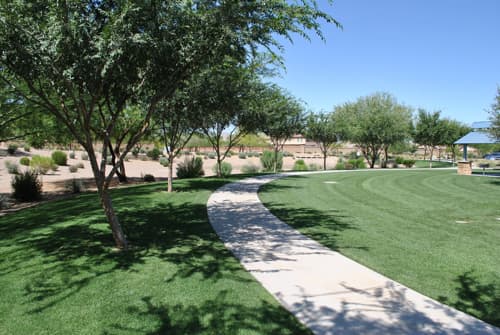AMWUA Blog
BY: Warren TenneyFor A Better Looking Summer Lawn, Plant Winter Grass Correctly

Preparing to overseed your summer bermudagrass for a winter lawn? You’re way too early. That’s just one of the warnings offered by turfgrass researchers at the University of Arizona’s Maricopa County Cooperative Extension program. Overseeding now could leave large bare patches in your bermuda lawn next summer. Avoid these three common mistakes for a prettier, even lawn all year that requires less work, money and water.
1. Timing: When you begin to water winter seed, your bermudagrass growth should be slowing down. If it is still hot – as it is in late September – the heat and water will encourage bermuda to grow again, exhausting the food it should be storing for next spring. That means a starved and patchy lawn next summer. Don’t overseed until mid-October.
2. Scalping: There is a long-held belief that it is best to dethatch bermuda and then mow and “scalp” the lawn to nearly bare ground before seeding for the winter. This is a myth. Scalping can remove many of the bermudagrass crowns above ground that the root system feeds to resume growing properly in the spring. Once again, that can lead to large bare patches in a summer bermuda lawn.
3. Fertilizing: It is a waste of time and money to create a layer of manure when overseeding bermudagrass with winter seed. A light dusting of mulch can help to retain some moisture. Simply drag a grass rake over the winter seed to make sure it is in direct contact with the soil or use a reel mower (the type your grandfather used) to grind the seeds into the soil.

The Cooperative Extension has a short and clearly written set of instructions for overseeding bermudagrass with winter grass seed. Here are some of the basics.
1. Preparing: Stop fertilizing your bermudagrass 30 days before you plan to spread your winter grass seed. Two weeks before overseeding raise the height of your typical mowing blades by 30-40 percent and decrease watering by 30 percent.
2. Seeding: Stop watering two to three days before seeding. Lower the mowing height another 25-30 percent, remove the collection bag and leave the clippings as mulch for the winter seed. Use 12 to 15 pounds of winter grass seed for every 1,000 square feet of lawn.
3. Nurturing: Water three to four times a day just enough to keep the seeds moist. Don’t let the water pool or runoff the site. Overwatering can make seedlings prone to disease. Once you see the green haze of a new lawn cut water to once a day and then every other day. Slowly lessen the amount of water used on the new lawn over the next three to four weeks. Then you can use Arizona Meteorological Network Turf Reports for precise lawn watering instructions. Fertilize with ammonium phosphate two weeks after seedlings emerge and water the new lawn after applying the fertilizer. Mow when the grass is about three inches high.
A small area of lawn watered appropriately is an acceptable part of a desert landscape. It cools the yard, offers a place for dogs and children to play, and it’s attractive. Wall-to-wall turf is a waste of water in a desert urban center. Check with your city if you are thinking about decreasing the amount of grass in your yard. Some AMWUA cities offer rebates to encourage you to replace grass with desert trees, shrubs and groundcover.
For 48 years, Arizona Municipal Water Users Association has worked to protect our member cities’ ability to provide assured, safe and sustainable water supplies to their communities.
